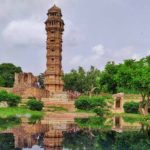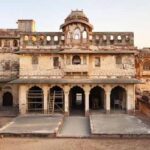Rani Padmini Palace is the palace where Rani Padmini lived after she married Rawal Ratan Singh, the ruler of Mewar Kingdom who ruled between 1302 and 1303 CE. The majestic palace is a historical monument related to the self-sacrifice of Rani Padmini after Chittorgarh was attacked by the Sultan of Delhi, Alauddin Khilji. The two storey monument stands rather strong right at the centre of the Chittorgarh Fort elevated on rocky terrain. The fort is surrounded by a lotus pool which adds to the charm of the monument.
One can imagine how glorious this site would have been when the royal ladies used it, the pool having colourful lotuses depicting grace and beauty in the rugged Chittor Fort. Those exploring Chittorgarh Fort must visit the Padmini Palace. Tourists from all over the world visit Chittorgarh to explore the grand historic monument and hear stories of adventure and sacrifice of the Rajputs of the Mewar Kingdom. The Rani Padmini Palace is where the Rajput women sacrificed their lives when the palace was attached by Alauddin Khilji.
It marks their loyalty and strength to fight or die instead of facing dishonour. When compared to other palaces on the premises, the Padmini Palace is smaller but is considered to be an attractive and a captivating one because of Rani Padmini’s beauty, intelligence and charm and the tragic story associated with her end. The rich history of the palace is even more fascinating when one explores the monument themselves.
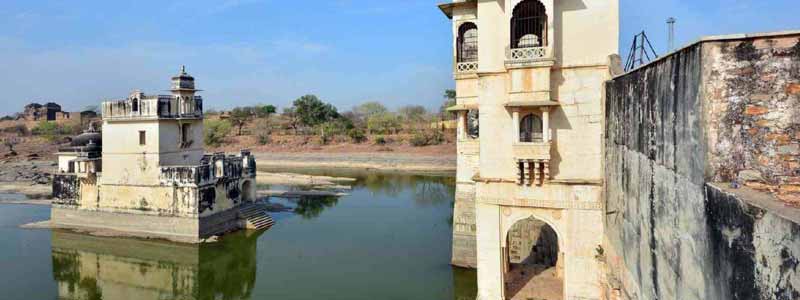
Rani Padmini Beauty, Brains, and Bravery
Rani Padmini Palace, the wife of the King of Chittorgarh (Mewar) Rawal Ratan Singh, was renowned for her beauty and graceful charm. In fact, it was this beauty that attracted Ratan Singh to the Singhal king’s land where Padmini was the princess. Ratan Singh wooed and wed Padmini and received a huge dowry. Ratan Singh’s courtier Raghav Chetan incurred a reputation as a sorcerer. It may have been this or his demand of a share in the dowry – whatever the reason – the king banished Raghav Chetan who promised to exact revenge.
He made his way to the court of Alauddin Khilji in Delhi. Raghav Chetan tried to entice an anti-Hindu Khilji to attack Chittorgarh, but his plans didn’t seem to work well. It was only when he started to describe Rani Padmini’s beauty that Khilji considered attacking the state and taking the queen forcefully. When Khilji laid siege to Chittorgarh Tour, he realized that the well fortified kingdom would not surrender. He sent message to the king that he would withdraw his siege if allowed to look at Rani Padmini once.
The queen assented to showing her reflection on a mirror. The sly Khilji, however had other plans. While his accomplices took note of the fort’s entry points and security arrangements, Khilji abducted the King who had accompanied him to the gates. Rani Padmini Palace, known for her ingenuity, sent a regiment of soldiers dressed as women in palanquins to enter the Khilji camp. Ratan Singh was rescued but the siege continued to drain Chittorgarh’s scant resources.
Hearing that King Ratan Singh planned to storm out and face the odds of fighting a much larger army, Queen Padmini and the womenfolk of Chittorgarh prepared a sacrificial pyre and committed Jauhar (self immolation or ritual suicide) rather than facing dishonour at the hands of the enemy. The king and his men, infuriated by the loss of their family decided to commit Saka – a fight unto death, dressed in the ochre robes of ascetics or monk warriors. While Khilji’s army ultimately won the battle, the disappointment that faced them as they entered the fort robbed them of the pleasure of victory.
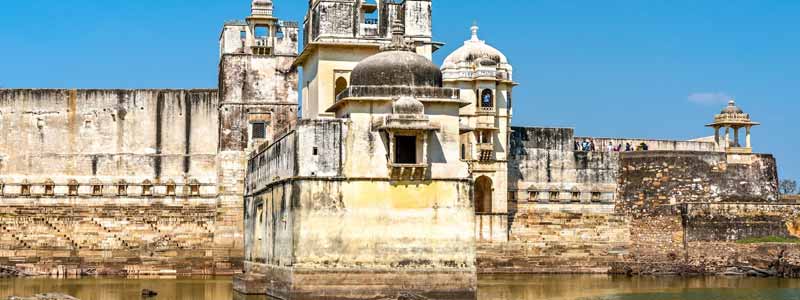
Architecture of Padmini Palace
Rani Padmini Palace is a white three-story monument in the middle of the Chittorgarh Fort. The architecture is simple yet captivating. The palace is surrounded by a water body which is commonly called the Lotus Pool. The palace has a water moat surrounding the monument. The structure was built as per the Persian style of architecture and has stone a staircase leading inside, several windows, spacious room, and pavilions. The top floor has a small room with a mirror on the wall. This is the room which is believed to be the location Rani Padmini showed her reflection in a mirror to Alauddin Khilji.
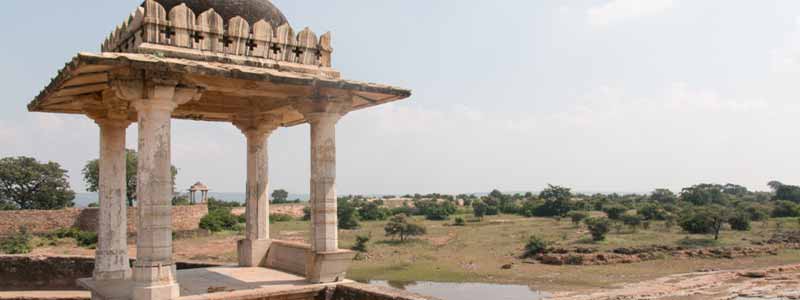
Best Time To Visit Padmini Palace
August to February is the best time for tourists to visit the palace as the weather stays pleasant through the day and makes exploring the site an enjoyable experience. June to September is monsoon time in Rajasthan. The lotus pool is filled with water during this time, making sightseeing an even more pleasurable activity here.
How To Reach Padmini Palace
Rani Padmini Palace is located on the premises of Chittorgarh Fort. Tourists can take a bus ride or chose to hire an auto-rickshaw, taxi or rent a cab to reach the fort premises via Fort Road.
By Road: Padmini Palace is located in the Chittorgarh Fort at a distance of 5 km from centre of Chittorgarh on Fort Rd. One can easily reach here by rickshaw, local bus or taxi or by walk.
By Rail: Rani Padmini Palace is well connected through nearest Chittorgarh Railway station (6 km) to major cities railway stations like Delhi, Agra, Mumbai, Chennai, Bikaner, Pali, Jaipur, Ahmedabad.
By Air: Padmini Palace can be reach through nearest Udaipur airport (98 km) which is well connected with regular domestic flights to Delhi, Mumbai.





